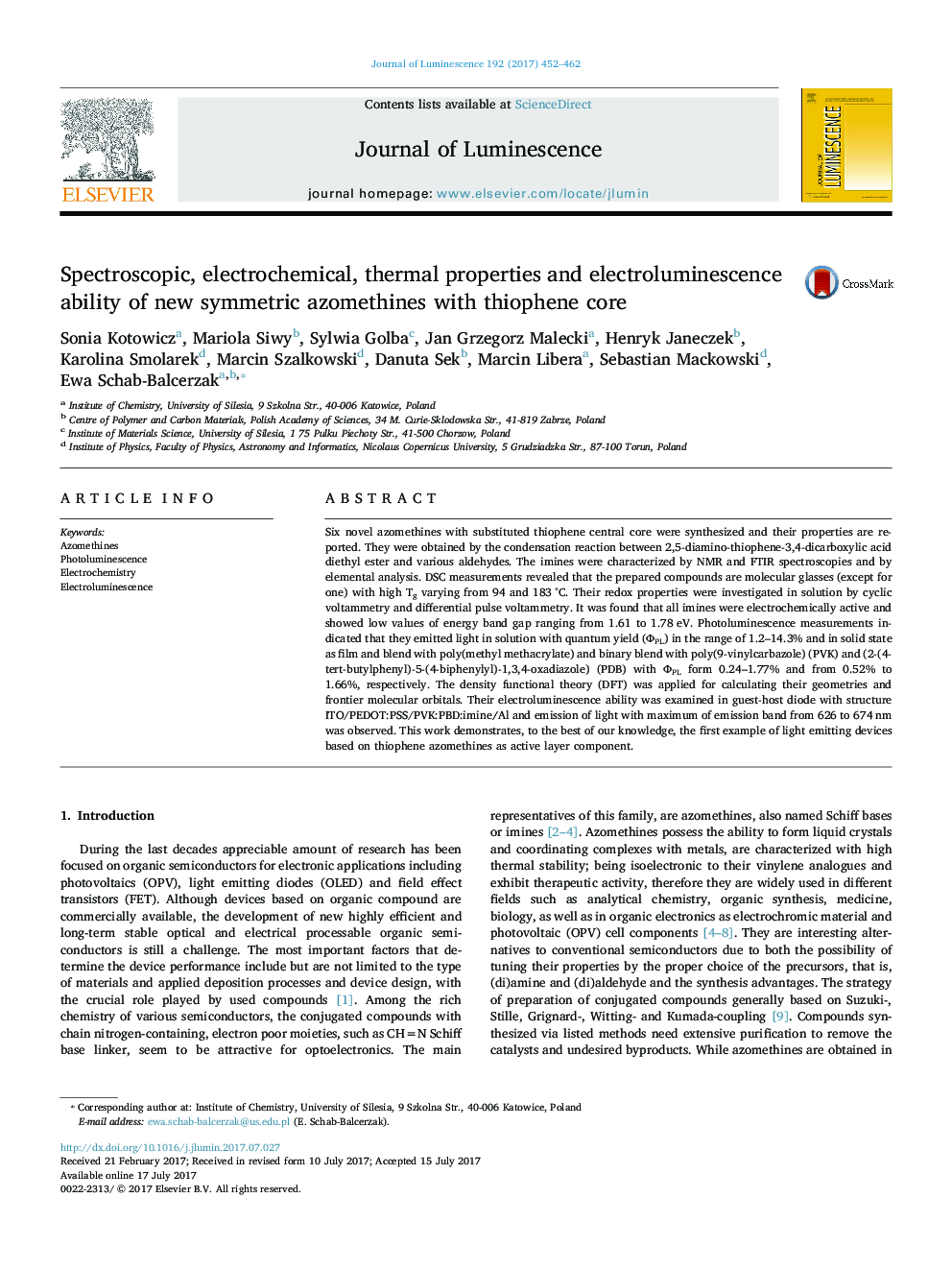| Article ID | Journal | Published Year | Pages | File Type |
|---|---|---|---|---|
| 5397423 | Journal of Luminescence | 2017 | 11 Pages |
Abstract
Six novel azomethines with substituted thiophene central core were synthesized and their properties are reported. They were obtained by the condensation reaction between 2,5-diamino-thiophene-3,4-dicarboxylic acid diethyl ester and various aldehydes. The imines were characterized by NMR and FTIR spectroscopies and by elemental analysis. DSC measurements revealed that the prepared compounds are molecular glasses (except for one) with high Tg varying from 94 and 183 °C. Their redox properties were investigated in solution by cyclic voltammetry and differential pulse voltammetry. It was found that all imines were electrochemically active and showed low values of energy band gap ranging from 1.61 to 1.78 eV. Photoluminescence measurements indicated that they emitted light in solution with quantum yield (ΦPL) in the range of 1.2-14.3% and in solid state as film and blend with poly(methyl methacrylate) and binary blend with poly(9-vinylcarbazole) (PVK) and (2-(4-tert-butylphenyl)-5-(4-biphenylyl)-1,3,4-oxadiazole) (PDB) with ΦPL form 0.24-1.77% and from 0.52% to 1.66%, respectively. The density functional theory (DFT) was applied for calculating their geometries and frontier molecular orbitals. Their electroluminescence ability was examined in guest-host diode with structure ITO/PEDOT:PSS/PVK:PBD:imine/Al and emission of light with maximum of emission band from 626 to 674 nm was observed. This work demonstrates, to the best of our knowledge, the first example of light emitting devices based on thiophene azomethines as active layer component.
Related Topics
Physical Sciences and Engineering
Chemistry
Physical and Theoretical Chemistry
Authors
Sonia Kotowicz, Mariola Siwy, Sylwia Golba, Jan Grzegorz Malecki, Henryk Janeczek, Karolina Smolarek, Marcin Szalkowski, Danuta Sek, Marcin Libera, Sebastian Mackowski, Ewa Schab-Balcerzak,
